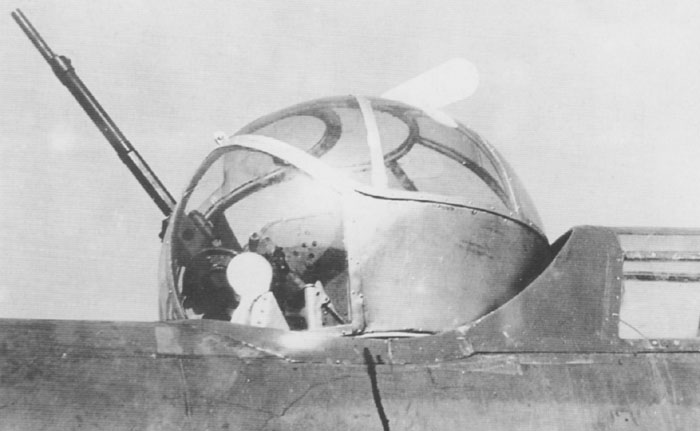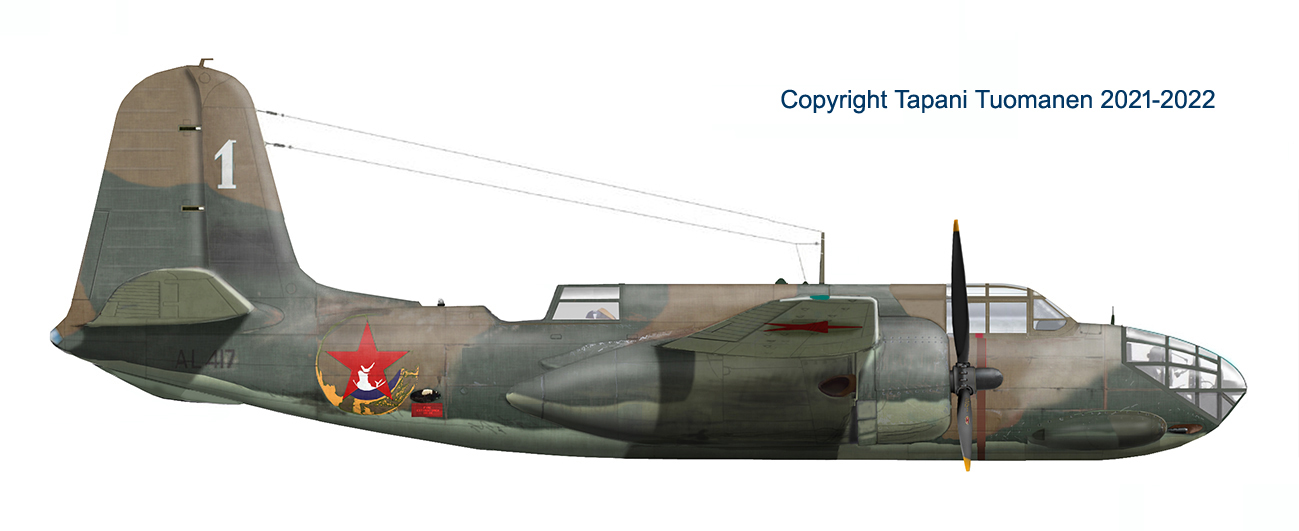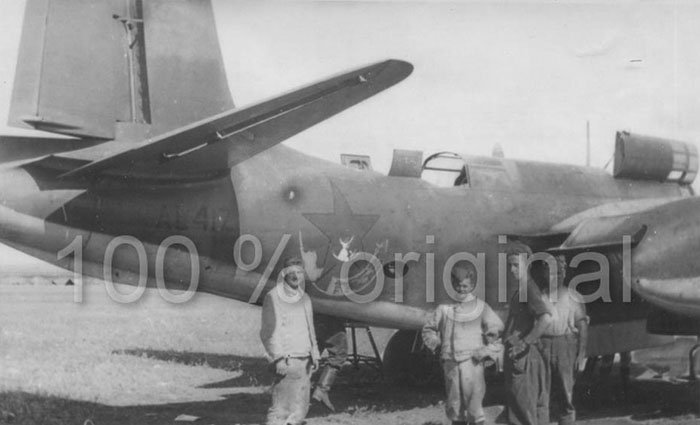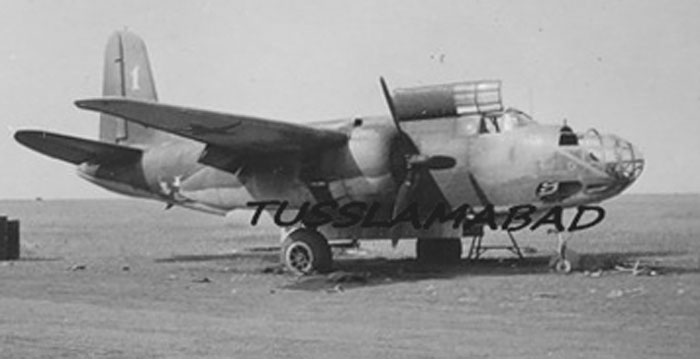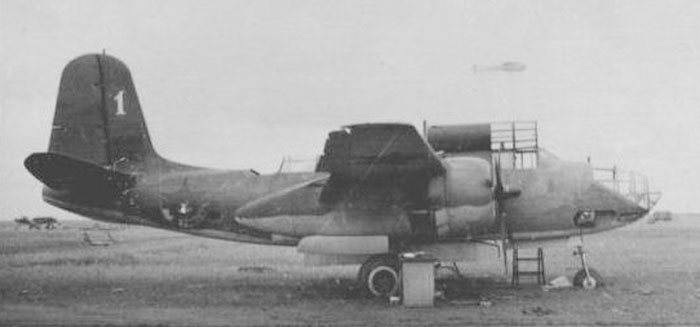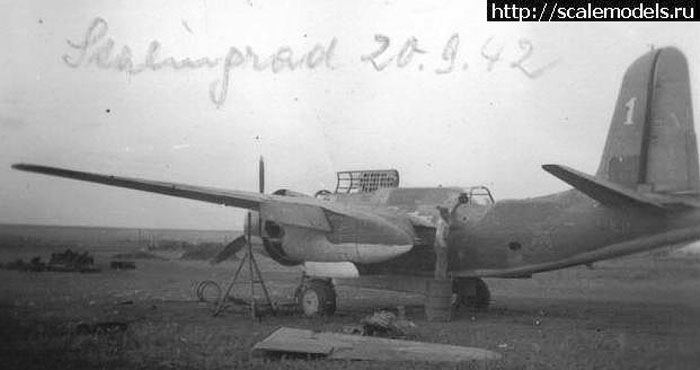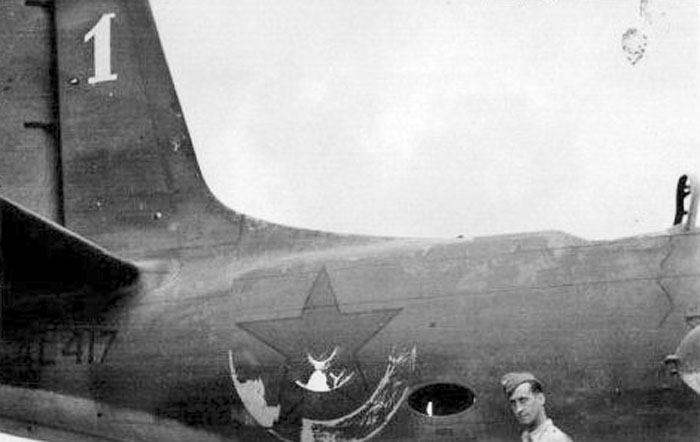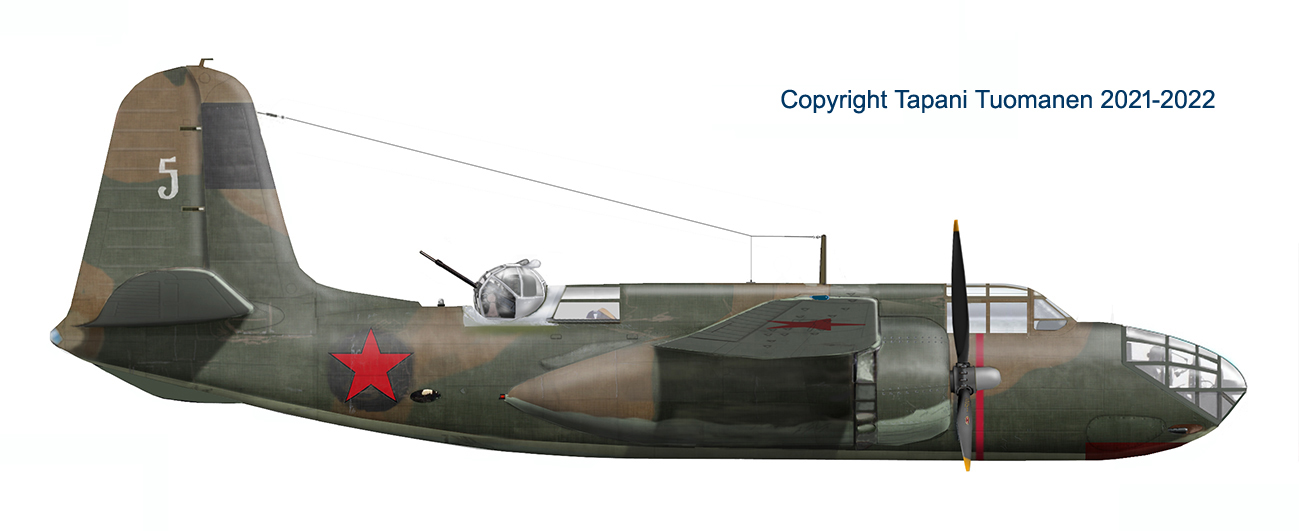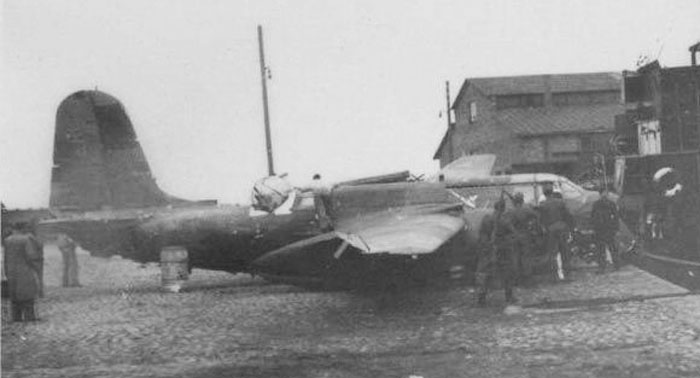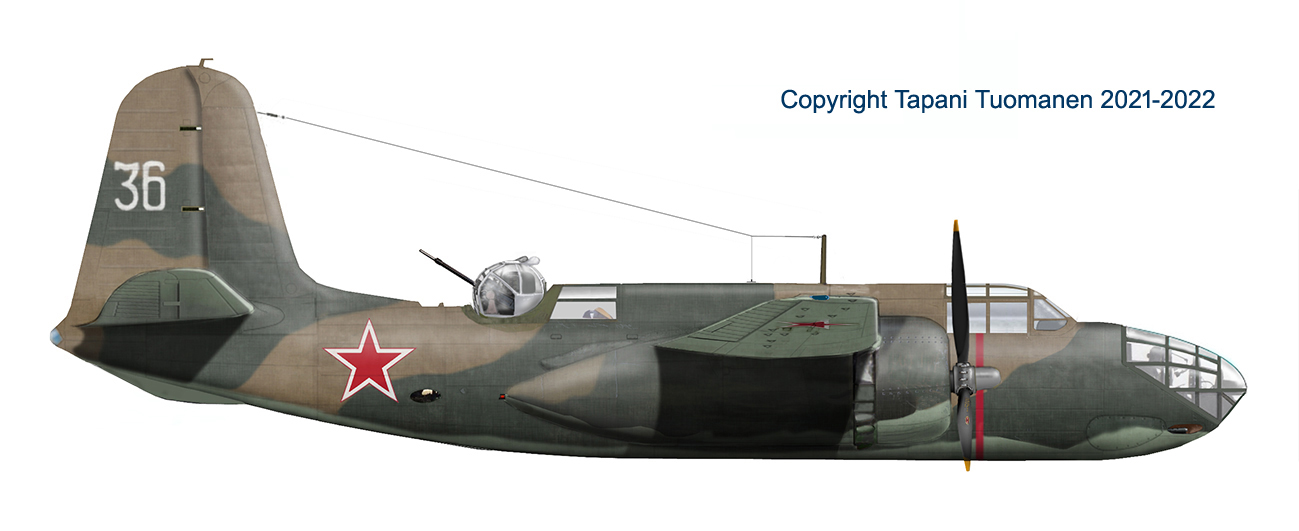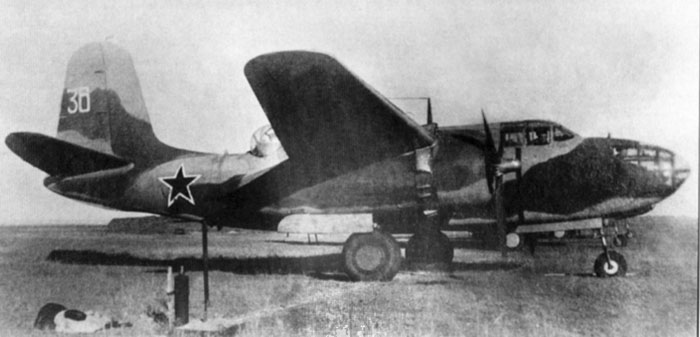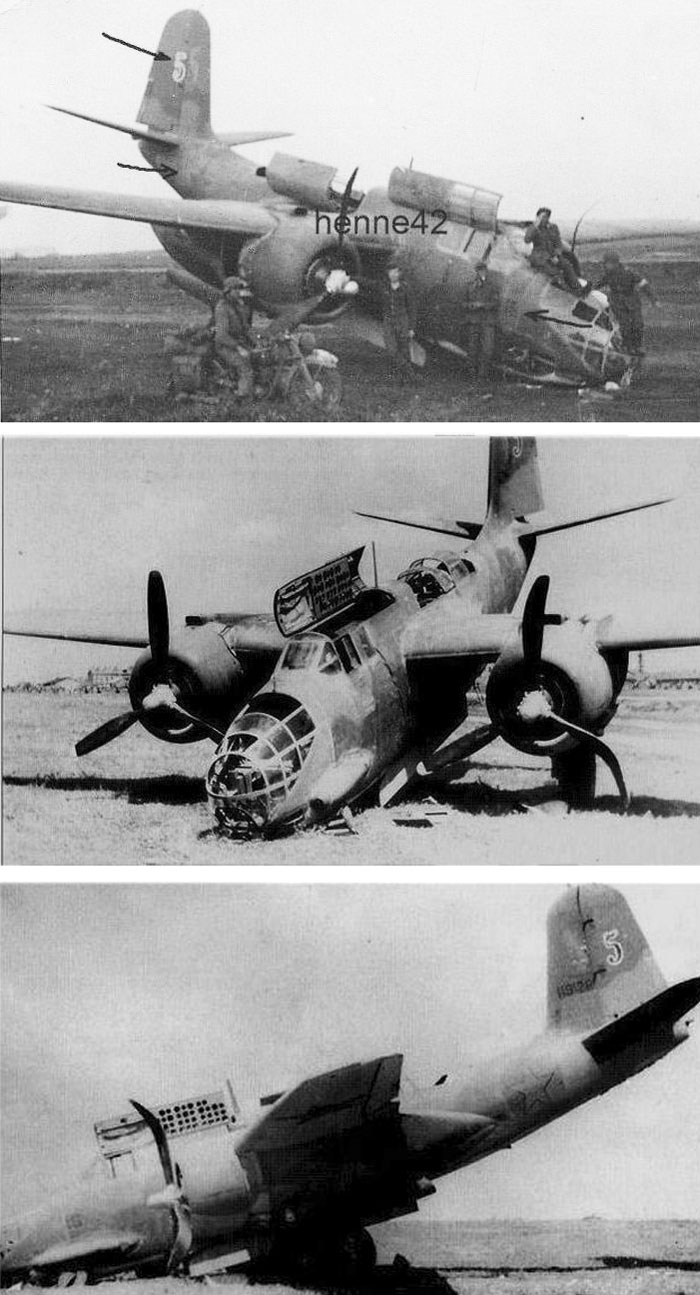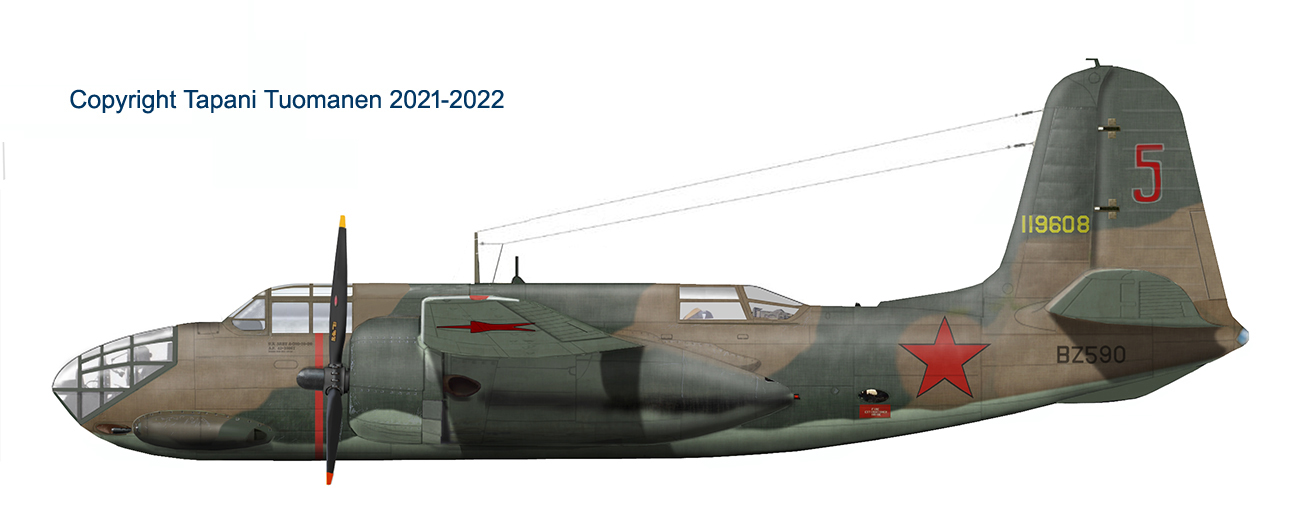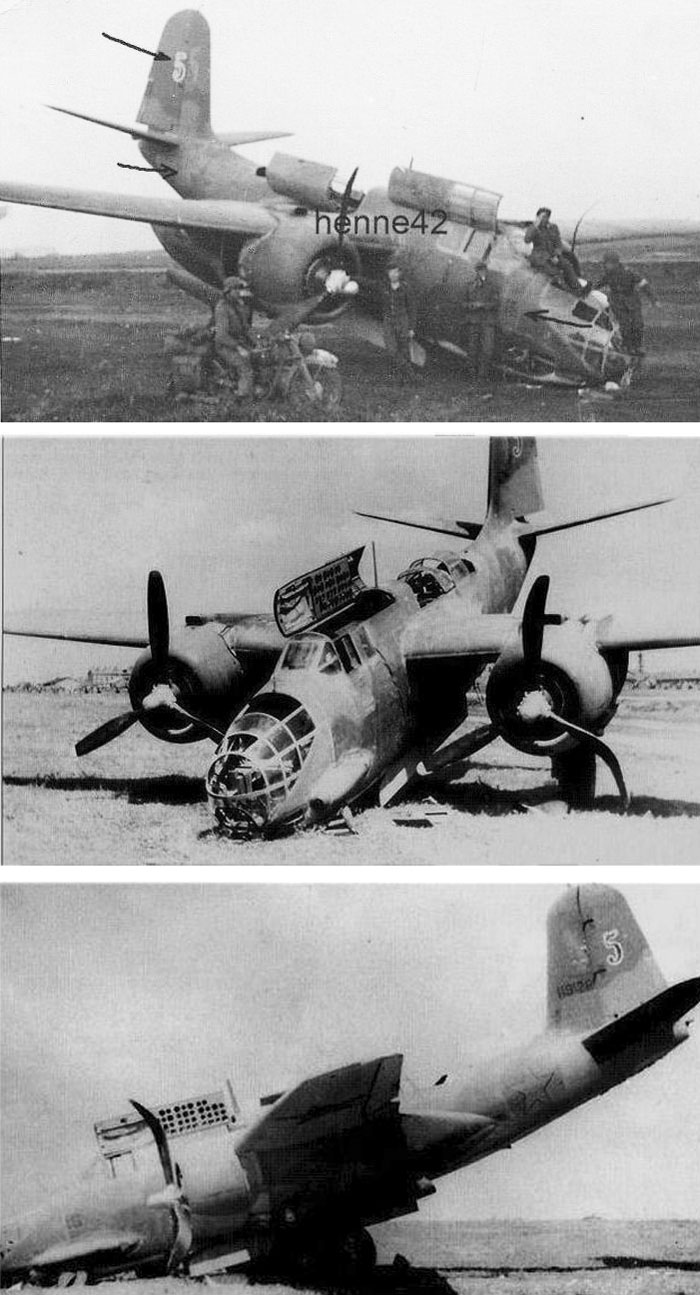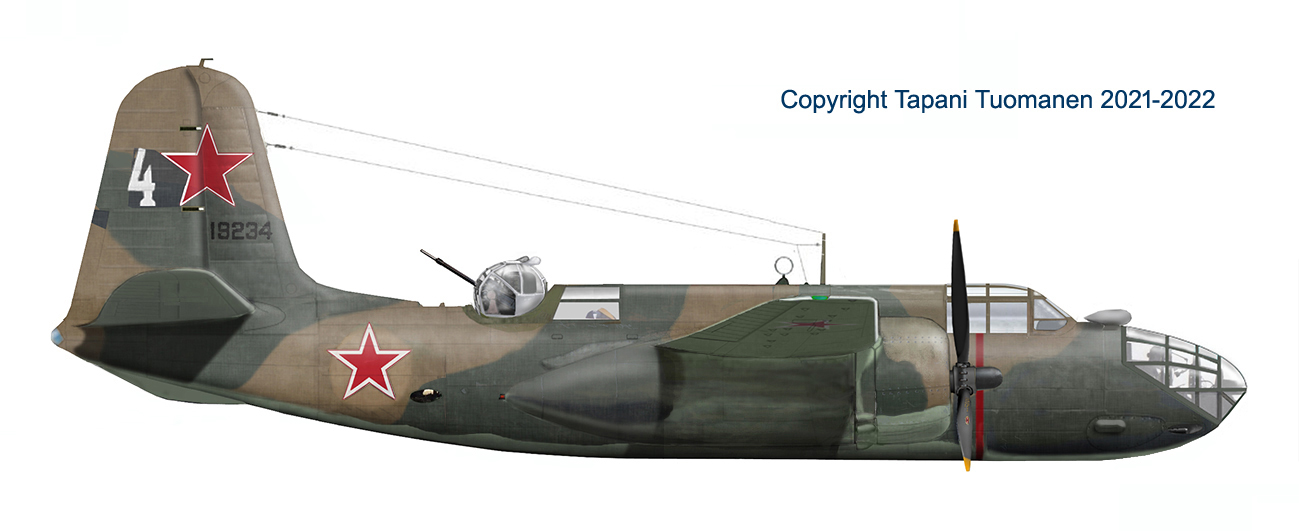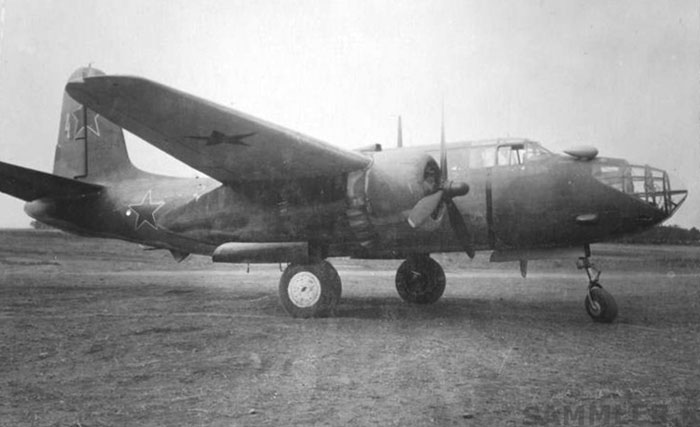The name 'Boston III' designates different variants of the plane that were in service with the Royal Air Force, that were visually similar to some U.S. variants. In Soviet Union, the name Boston III or B-3 designated all the versions before the A-20G, including the A-20B.
In the page of Boston III we can include different variants:
the DB-7B and DB-7C in service with the RAF and characterized by the oblique cut of the nose glazing and protruding blisters on the nose sides containing four 7.62 mm machine guns; about 77 were exported from UK to the Soviet Union; the A-20A, very similar looking, apart for the blisters, wasn't exported in Soviet Union.
These early versions were characterized by an unique large lateral exhaust pipe.

A-20B were also known as Boston or B-3 in Soviet Union although they were not in service with the RAF, but they are described in a separate page because they were well distinguishable for the stepped front glazing.
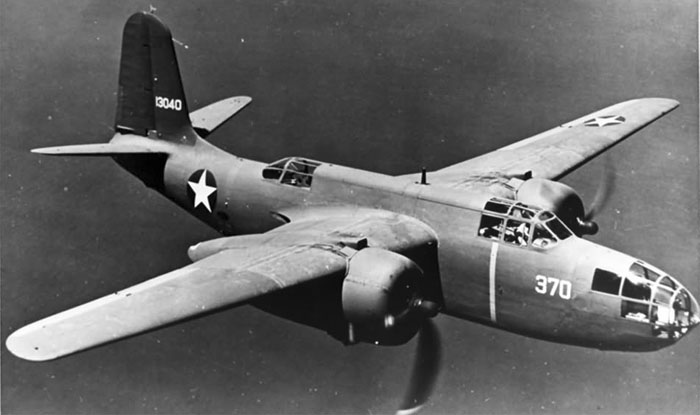
The A-20C, successive to the A-20B and well distinguishable from this for the return to the oblique cut of the nose glazing, was visually distinguishable from DB-7B/C/A-20A versions for details of the exhaust tubes.
A-20C were built as Boston III and IIIA for the Great Britain, but the most part of them, 690 planes, were exported to the Soviet Union or retained in U.S. after the attack on Pearl Harbour.
They could have had the typical protruding blisters on the nose sides containing four 7.62 mm machine guns; all the weapons were of 7.62 mm caliber, the dorsal defensive mg was twin; the rearward-firing machine guns in the nacelles were deleted.
Often the Soviet A-20C appear with flat nose sides and two fixed 12.7 mm machine guns as A-20B; it is unclear if they were built so, or it was a Soviet modification.
Different arrangements of the exhaust tubes and of the supercharger intakes, with or without the extensions for the air filters over the cowling, were possible.

A defect of Bostons was their vulnerability, particularly to attacks from behind by German fighters, and led to high losses. The lethality of their small 7.7 or 7.62 mm machine guns was insufficient to create a good defense, and they had a too limited field of fire.
The crew of the DB-7/Boston III/A-20A-B-C in England and the United
States consisted of three people: a pilot, a navigator-bombardier and
a radio operator-rear gunner that actioned both the dorsal weapons and
the one firing through the ventral hatch.
In the Soviet Union, a further gunner was added for the ventral weapon,
bringing the crew to 4 men.
The 7.62 Browning were often replaced by a Browning 12.7 mm or an UB; often the small machine guns in the nose blisters were replaced with two UB 12.7 mm.
In Soviet Union, many B-3s were rearmed with the UTK-1 turret with a Soviet UBT 12.7 mm machine gun with K-8T or PMP sight and a prominent side magazine with 200 rounds.
The primitive British Wimperis D-8 gunsight, which was put on export planes instead of the highly advanced Norden for secrecy reasons, was replaced by Soviet OPB-1R (daytime) or NKPB-4 or 7 (for night bombing) sights.
The planes were often equipped with a Soviet radio compass, whose aerial was hidden in a drop radome posed on the back or, rarely, on the nose of the plane.
Right: UTK-1 turret with UBT 12.7 mm machine gun. Note the wide magazine on the right side of the gunner.
